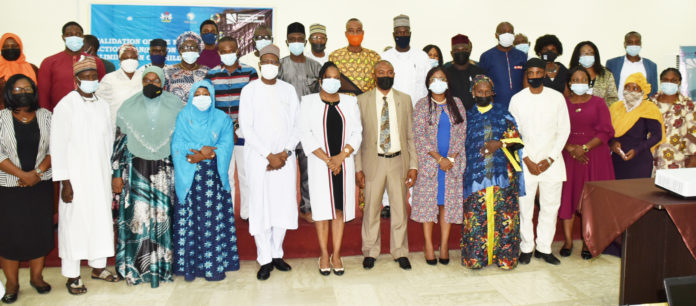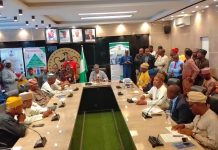
The Federal Government has begun the process of validating the National Policy on Child/Forced Labour, and the National Action Plan (NAP) on the Elimination of Child/Forced Labour in Nigeria (2021 – 2025).
Flagging off the process in Abuja, Permanent Secretary, Federal Ministry of Labour and Employment, Dr Yerima Peter Tarfa, stated that this is part of Federal Government’s commitment to achieving Target 8.7 of the Sustainable Development Goals (SDG).
He stated that the Government of Nigeria had demonstrated the political will to ensure the achievement of Target 8.7 of the SDG, and “has shown enough readiness to address the challenges of the vulnerable groups, including eradicating Child Labour.”
Tarfa noted that as a Pathfinder country with commitment to take accelerated actions on combating Child Labour, Nigeria’s “commitment has translated into several actions including the recent Action Pledge made during the global Launch of 2021 International Year for Elimination of Child Labour (IYECL), as well as the formal launch of IYECL billed to hold on 15th April, 2021.”
He urged those charged with the responsibilities of translating those commitments into action, not to fail.
Tarfa recalled that the first National Policy on Child Labour and the National Action Plan for the Elimination of Child Labour in Nigeria was developed in 2013 with a five-year implementation period (2013 – 2017).
According to him, “the thrust of the policy was to provide ‘legally binding guidelines for actors implementing national programmes on Child Labour’ towards eradicating Child Labour, especially its worst forms by 2015 and thereafter by 2025 in alignment with the timelines and targets set by the Millennium Development Goals (MDGs) and the succeeding Sustainable Development Goals (SDGs) Target 8.7 respectively.”
The Permanent Secretary stated that the National Policy and Action Plan provided for the establishment of Steering Committees on Child Labour at national and sub-national levels.
He added that “membership of these Committees at all levels was constituted from the tripartite constituents of Government, Organised Labour and Employers’ Associations, as well as the civil society organisations, faith and community-based associations.”
According to him, participants at the workshop were drawn from these constituents.
Tarfa explained that the new NAP (2021 – 2025) would bridge the gaps in implementation, which an Evaluation Report of the previous NAP had identified, and work to create more impact.
“Having identified the gaps in the implementation process of the expired NAP, we set our mind to developing a robust new NAP that will align with Regional Plans and take into consideration emerging trends on Child Labour eradication,” he said.
The Permanent Secretary charged participants at the workshop, as they take a final look at the reviewed Policy and Action Plans, “to ensure that the Plan of Action contains not only time-bound activities that have direct bearing with Child Labour, but also monitoring and evaluation mechanism that will ensure monthly or quarterly assessment of progress made against the Plan.”
In a goodwill message, Country Director of International Labour Organisation (ILO), Abuja Office, Ms Vanessa Phala, stated that an effective implementation of the policy and its action plan would greatly reduce the rate of child labour in the country.
Represented by Dr Agatha Kolawole, Phala reiterated ILO’s commitment “to continue to support constituents and other relevant partners in ensuring the sustainable achievement of the elimination of child labour by 2025.”
Present at the occassion were representatives of Federal Ministries of Mines and Steel Development, and Agriculture and Rural Development; Nigeria Labour Congress (NLC), and Trade Union Congress (TUC).
Target 8.7 of the SDG is the eradication of forced labour, modern slavery, human trafficking and child labour, including recruitment and use of child soldiers, and by 2025 end child labour in all its form.
Charles Akpan
Deputy Director/Head (Press and Public Relations)
14th April, 2021




